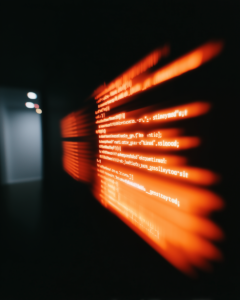29/01/2021
AI is increasingly used in all areas of businesses to give companies an edge over their competitors, and the music industry is no exception. One example of such a use over the past few decades is how people have used AI to write music. This involves feeding an AI large amounts of data from music and the AI learning what musical characteristics and patterns a listener will enjoy. AI has even been able to create music to fit a specific genre.
Most uses in the music industry are more behind the scenes. For example, Spotify, the streaming provider, is a keen user of AI, leveraging its power to improve its services and to create a loyal consumer base. The company uses AI to market music specifically for each listener, and create playlists based on what they think the listener would enjoy based on their previous listening history. This means that the longer a customer uses their service, the more fine-tuned the suggestions provided by Spotify are. Being able to provide such a personalised experience provides a big incentive for users to stay with Spotify’s platform instead of turning to another service provider.
Not only does this improve the experience of the listener, but it can also improve the music industry for artists using the platform, whose music would not otherwise become as well known. Indeed, according to the BPI, which represents the recorded music industry, in 2005 the top 10 artists were responsible for 13% of all sales, whereas in 2020 the top 10 artists accounted for only 5%. No doubt the ability of Spotify’s algorithms to expose listeners to smaller artists they would otherwise not encounter has aided this democratisation of the music industry (though that’s not to say that the issue of how much royalties such streaming services pay to artists has been settled). It is no surprise, therefore, that Spotify are continuously developing ways to utilise AI across all areas of its services. For example, a patent application filed in 2019 is directed to the observation of a user’s emotions so that music that reflects their emotions can be automatically played, and another recently published patent application is for the use of AI for determining plagiarism in music. In this latter patent application an AI is trained using computer formatted ‘lead sheets’ (a lead sheet contains the essential elements of a song). A test lead sheet for a new song is passed through the trained plagiarism detector and similarity measurements of portions of the new song to the training dataset are indicated. From this, an assessment can be made whether the music is likely to infringe another musician’s copyright.
Indeed, there have recently been a number of high profile cases related to copyright infringement of music, such as the US case on Blurred Lines trial which concluded in 2018. Experts and layers are normally relied upon to give opinions on whether a particular song-based copyright is infringed. It would seem that Spotify have detected a gap in the market which they are trying to capitalise on. Unsurprisingly, given that AI research is often an expensive process, they are turning to the patent system to try to protect their technology and their investment.
A look at the research area of Spotify’s website gives an insight into the amount of research that is being carried out, large amounts of which is based on AI technologies such as machine learning. Examples range from music creation to understanding voice commands, and illustrate just how vast the uses of AI in the music industry are, and how it can be used to improve customer experience. Reflecting the large amount of research that Spotify are carrying out is their increasing number of patent applications. A search on TotalPatent One shows that they have filed a total of 195 patents in Europe, with 2020 being the highest number yet.
However, despite AI’s increasing use in almost all areas of technology, it can be more challenging to gain patent protection for an AI related invention. This is because AI is based on computational models. Computational models are a type of mathematical method and mathematical methods ‘as such’ are excluded from patentability under Article 52 of the European Patent Convention. This means that patenting core AI technology by itself can be difficult Nevertheless, there are a number of ways that AI can be protected, such as by focussing on how an AI interacts with or controls real world objects, as discussed in our recent blog. The number of AI related European patent applications is rising steeply and, after a thorough examination by the European Patent Office, many of these will become granted patents. For a quick primer on how AI can effectively be protected using the patent system, our previous blog provides a good starting point. If you still want to know more, then please contact one of our expert attorneys.
This article is for general information only. Its content is not a statement of the law on any subject and does not constitute advice. Please contact Reddie & Grose LLP for advice before taking any action in reliance on it.

